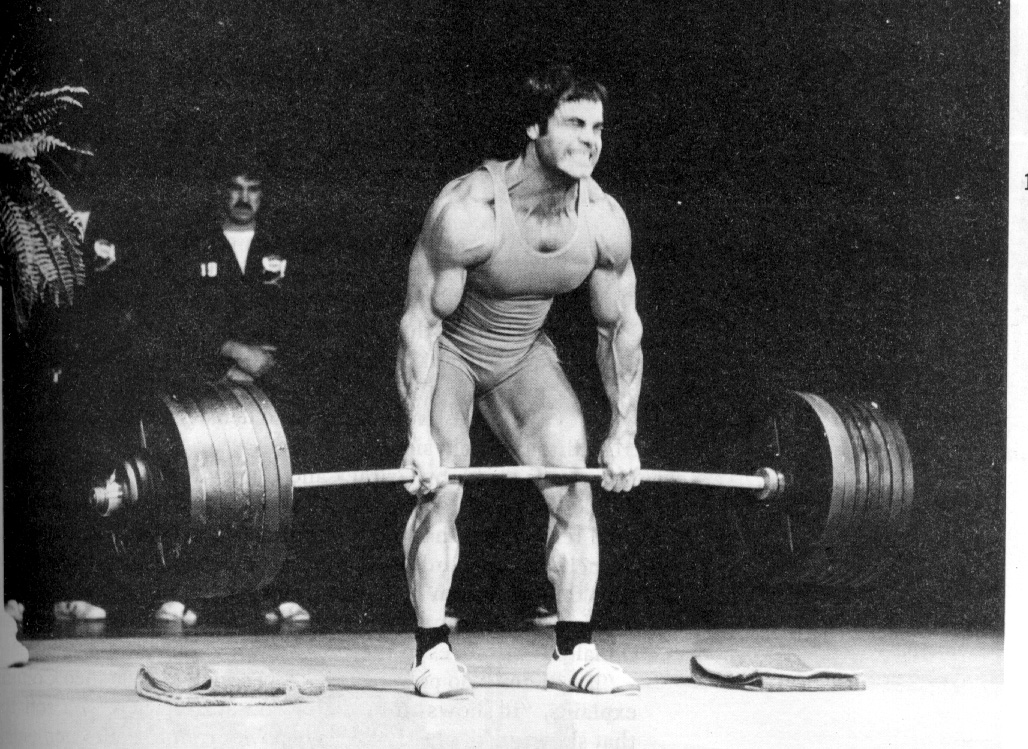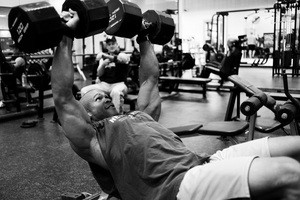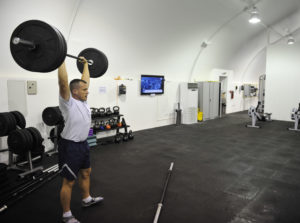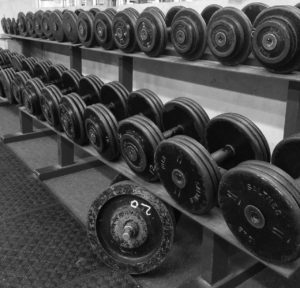Personal Touch…
The deadlift. The name itself projects a message of difficulty and hard-work.
It’s been the lifeblood of my training – from the day I set foot in the gym to now.
I didn’t start strong – My first ever 1RM at age 16 was 100kg. Since then, I’ve worked solidly, year on year to build it up to 285kg, signposting it as my strongest lift.
Most recently, I wrote the Superhuman Strength Protocol, taking my deadlift from 270kg to 285kg in 6 weeks.
Therefore, people often either love it or hate it. It may be your strongest lift, it may be your weakest, or you might have never performed it at all. However, you will soon find out why every single person should have the capacity to perform a deadlift with exceptional technique.
Due to the increasing awareness of the strength and the benefits of deadlifts, there are several coaches/personal trainers (including myself) that have elderly women deadlifting with no pain.
So, lets first breakdown the movement briefly and destroy the myths surrounding this exercise.
WHAT IS THE DEADLIFT?
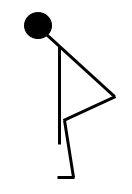 The deadlift is a lower/full body strength exercise in which the lifter places their grip on the outside of their knees, lifting the barbell off the floor past the knees to an erect posture with complete hip and knee extension (17).
The deadlift is a lower/full body strength exercise in which the lifter places their grip on the outside of their knees, lifting the barbell off the floor past the knees to an erect posture with complete hip and knee extension (17).
Although this is a huge over-simplification, it covers the general idea – head here if you want a more in-depth look into the deadlift.
There are also several variations including: sumo deadlift (stance width outside grip), stiff legged deadlift (minimal knee flexion) and so on. Despite some minor differences, all of the principles and the benefits of deadlifts are very similar, you pick a weight up off the floor and put it back down again.
There are key things that must be considered to perform the exercise safely and correctly are as follows:
NEUTRAL MEANS NEUTRAL
The amount of times you’ve heard this may be irritating. However, it is worth reiterating and clearing up a bit of confusion.
Not extended. Not straight. But a neutral spine.
The spine involves a number of different regions; however, the three main areas of interest are the cervical (skull/neck), thoracic (upper chest to stomach) and lumbar (stomach to pelvic structure).
Each of these sections contains natural curves (provided you don’t currently possess any postural imbalances), that need to be stabilised during the movement.
A neutral spine is a state in which a mechanically sound, structural position is found - optimizing output, leverages and keeping you injury free.
IT’S NOT A SQUAT
Many people often try and perform a squat with the barbell from the floor upwards. Whilst this may be due to motor control, familiarity with the squat – the cause is irrelevant – only that we get the technique right from now on.
The deadlift exercise requires a higher hip position to fully utilise the hip extensors (one of the key benefits of deadlifts), whilst maintaining a vertical bar path and keeping the bar close to the body.
Don’t be tempted to drop your hips low just because you’ve been told that you have to “lift with your legs”.
BUT DEADLIFTING IS BAD FOR YOUR BACK, RIGHT?
My god. This, in my opinion, is worse than the “squats are bad for your knees” comment.
Although much of the research does show high levels of activation in the erector spinae musculature (3, 5, 10) since when was activating muscles a bad thing?
The idea that training the musculature that stabilise your spine and reinforces a strong position is a bad thing is simply ridiculous.
True, if you perform the movement poorly, there’s a chance of hurting you back. But if you run on a treadmill poorly, there’s a chance of slipping and falling flat on your face.
Your choice I suppose.
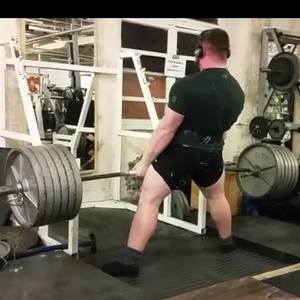
LACK OF EXERCISE KNOWLEDGE/COACHING
If you experience significant lower back pain during the deadlift, this isn’t necessarily cause for concern.
Short of having chronic disc compression and in the early stages of rehabilitation, pretty much everyone should be able to deadlift with no lower back pain – so simply learn how to do it correctly.
Even if you are suffering from back pain, one of the major benefits of deadlifts is one of the greatest exercises for rehabilitation following lower back injury. I have personally worked with individuals with chronic lower back pain and the easiest way to completely eradicate the problem? Teach them to deadlift effectively.
BREAKING YO’ BACK
Ever wondered where the phrase, “Lift with your legs” comes from?
Early research investigating lumbar compression led to the idea that any time you lifted a weight whilst leaning forward at the hip, spinal compression occurs and therefore should be avoided (6, 15). Then, the idea of straining in this position made many people cringe.
To reduce the incidence of lower back related injuries, clinical/medical professionals thought it best to completely avoid ever utilising the “dangerous” lifting techniques and teach everyone to “squat down” to pick things up.
However, the main issue here is the level of compliance is very low due to the high metabolic demand of squatting as an alternative (9, 11, 19), meaning people can’t be bothered squatting all the way down to pick something up off the ground. This is two main issues here are:
Ever wonder why people naturally go into the deadlifting movement? The key is in the question itself because one of the major benefits of deadlifts is that it’s a natural movement for us to perform!
The worst thing of all, is people don’t know how to squat effectively either! Telling someone to not deadlift because it’s bad for your back, then asking them to perform a horrific excuse for a squat is the real-life example of the phrase, “Out of the cauldron and into the fire”.
You might be going from bad to worse.
Rather than addressing the problem at the source by teaching people how to perform multiple lifting techniques correctly, we instead have attempted to completely bypass the situation.
As humans we are meant to adapt and move in a variety of different ways. You simply can’t “lift with your legs” all the time. This is supported by research investigating different lifting techniques summarising that all forms of lifting techniques tend to have advantages and disadvantages, it’s a matter of the circumstances you are in (16).
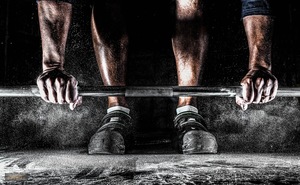
MISCONCEPTIONS
Years ago, I literally had an individual teaching me on a day course say the words, “Never bend over at the hip”. I asked and said, “Surely you mean during certain exercises?”. The reply was, “Nope. Just in everyday life. You should never lean over as it’s counterintuitive and is bad for your back.” To this day, the stupidest comment I have ever heard.
The worst thing about all this, is that at a glance assuming a “hip dominant” strategy looks remarkably like “lifting with your back”. The only difference is that people who know how to use their hips, can prevent their lower back doing the work.
Being able to use your hips is essential, as it’s the largest joint in the body and is surrounded by a multitude of different muscles.
The majority of the research has failed to understand this concept due to being so focused on the effect in the lumbar spine. Thankfully, despite all the scare-mongering, some studies have shown that both the hips/back and knees must be bent to minimise the average force experienced throughout the body (2).
BENEFITS OF DEADLIFTS
This section is largely dependent on one main thing: your individual knowledge. Be it biomechanical, related to movement or muscle physiology, you can draw relevant information from pretty much any compound exercise. However, the benefits of deadlifts reveal a lot about an athlete, from both a lifter and coaching standpoint. One of the major benefits of deadlifts is that it can also be used as an assessment tool, revealing weaknesses in movement under load better than most physiotherapy based methods.
1) ABDOMINAL BRACING
To deadlift efficiently, the exercise requires the ability to correctly brace your core to stabilise optimal positioning. Often, the easiest way to increase an individual’s strength is to teach them to appropriately brace their core during loaded movement. If you can’t brace correctly, you’re asking your core to transmit force, whilst essentially acting like a sponge.
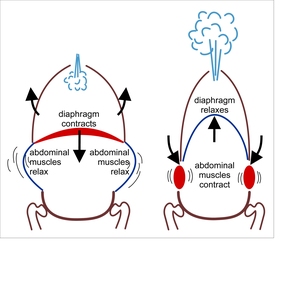
2) HIP AND SHOULDER ASSOCIATION
The ability to correctly position your position and stabilise your shoulders (largely through latissimus dorsi activation) is an absolute must. If you understand this, it becomes ten times easier to highlight weaknesses in yours/your client’s deadlift.This is where a lot of the mistakes are made during technique evaluation and prescription of assistance work to strengthen weaknesses. For example, if someone struggles to lockout a deadlift, the common fix would be to do block pulls and focus on that section of the movement. However, this is rarely caused by weak glutes and hips.
Instead, considering their position in the start/initiation of the exercise is what commonly fixes the problem. Therefore, using deficits to increase someone’s strength and mobility in the setup position, means they are in a much stronger position when puling from the floor.
3) MUSCULAR IMBALANCE/WEAKNESSES
Due to the amount of weight people can lift within this exercise, it provides the ultimate test for highlighting where they are weakest. Do your hips rise early? Does the bar drift away from the body? Does your back round horrifically? Do you struggle to break the weight off the floor? These questions can be tell-tale signs as to where your body is weakest.
4) MOTOR CO-ORDINATION
Now, you may be thinking that relative to other exercises, the deadlift seems like a simple movement, right? Well you would largely be correct, however the ability to deadlift efficiently and effectively is a lot harder than people think. Due to postural imbalances, overall poor motor control and weaknesses/poor activation of the glutes, many individuals flex at their spine as opposing to hinging at the hip and simply don’t understand the difference.
One of the key benefits of deadlifts is that if you are unable to perform the deadlift safely and effectively under load, it is a pre-cursor to motor deficiencies and potential injury in other movements.
STRENGTH DEVELOPMENT
5) PHYSICAL
I’ve mentioned it before and I will say it again, one of the main benefits of deadlifts is that it is one of the purest tests of full body strength. Many people herald the squat as the superior exercise, however (depending on your individual lifting technique) when performing the squat, the lifter gains significant increases in force power and ‘assistance’ to complete the lift from the stretch shortening cycle/the storage and release of elastic energy (12).
The deadlift on the other hand, is what is known as concentric only exercise.
The lift itself precedes the lowering of the weight, which is what sets it aside from many other exercises. To give you an idea, perform your regular squat, then take the same weight, rest it on pins in the bottom position and perform the concentric phase first (also known as an Anderson Squat). Then you will gain an idea of just how much the stretch shortening cycle contributes to your strength.
In addition, researchers have theorised that due to the absence of the SSC, concentric only exercise maximises contribution of the muscular/contractile component (7). Whilst there is limited research to date, Thompson et al. (18) found significant improvements in jump height from deadlift training in novice individuals.
Further research by Olinghouse et al. (14) also found improvements in jump height in untrained women. Although this research is limited by the training status of the subjects, it is the first couple of articles directly investigating the benefits of deadlifts for improving performance in other sports.
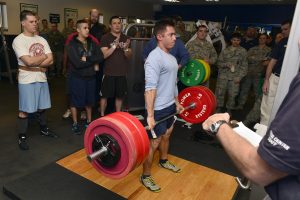
6) MUSCULAR ACTIVATION
The aim within the deadlift is to generate force using the hip and knee extensors whilst stabilising pretty much every other joint in the body. Whilst the back/erector spinae muscles are involved, the main muscles acting to lift the weight are the gluteus maximus and quadriceps muscles, with high levels of EMG being shown in these muscles (3, 5, 10).
From therapeutic/daily activities such as climbing the stairs (4, 8), to sprinting at maximal speed (1, 13, 20), the benefit of deadlifts involves building these muscles to be strong and active to maintain performance/quality of life.
7) MENTAL
Whilst this is largely open to interpretation, in my opinion the deadlift is a true test of someone’s mental strength as well as physical. As I’ve eluded to in the above paragraphs, the SSC provides a slight bit of assistance in the bottom (weakest) position. This is obviously great and incredibly beneficial, but people can often rely on this mechanism to complete the lift.
Again, I’m not stating there is anything wrong with doing that due to it still being a trainable factor that people can develop, the same as muscle mass or nervous system function. However, the squat and bench press carry with them a mental obligation to complete the lift. Lowering the bar down to your chest, your body naturally wants to push the bar away. Squatting down, your body panics and wants to stand back up again.
In the deadlift, as soon as you begin the movement, the body wants to let go and relieve itself from the strain. You literally have to fight against your body’s instincts to keep hold of the weight and stand to completion.
Hopefully this shows you the benefit of deadlifts and a few reasons why you should be deadlifting regularly. Go and pick up the bar!
270kg to 285kg Deadlift in 6 Weeks
If you want to gain access to new levels of deadlift strength -
Head here to gain access to our Brand New Training Program:
The Superhuman Strength Protocol
REFERENCES
- Bartlett, J. L., Sumner, B., Ellis, R. G., & Kram, R. (2013). Activity and functions of the human gluteal muscles in walking, running, sprinting, and climbing.American Journal of Physical Anthropology, 1(153), 124-131.
- Bejjani, F. J., Gross, C. M., & Pugh, J. W. (1984). Model for static lifting: relationship of loads on the spine and the knee.Journal of biomechanics, 17(4), 281-286
- Bezerra, E. S., Simão, R., Fleck, S. J., Paz, G., Maia, M., Costa, P. B., … & Serrão, J. C. (2013). Electromyographic activity of lower body muscles during the deadlift and still-legged deadlift.Journal of Exercise Physiology Online, 16(3), 30-39
- Brindle, T. J., Mattacola, C., & McCrory, J. (2003). Electromyographic changes in the gluteus medius during stair ascent and descent in subjects with anterior knee pain.Knee Surgery, Sports Traumatology, Arthroscopy, 11(4), 244-251.
- Caruso, J. F., Coday, M. A., Ramsey, C. A., Griswold, S. H., Polanski, D. W., Drummond, J. L., & Walker, R. H. (2008). Leg and calf press training modes and their impact on jump performance adaptations.The Journal of Strength & Conditioning Research, 22(3), 766-772
- Cholewicki, J., McGill, S. M., & Norman, R. W. (1991). Lumbar spine loads during the lifting of extremely heavy weights.Medicine and science in sports and exercise, 23(10), 1179-1186
- Cronin, J. B., McNair, P. J., & Marshall, R. N. (2003). Force-velocity analysis of strength-training techniques and load: implications for training strategy and research.Journal of strength and conditioning research/National Strength & Conditioning Association, 17(1), 148-155
- Distefano, L. J., Blackburn, J. T., Marshall, S. W., & Padua, D. A. (2009). Gluteal muscle activation during common therapeutic exercises.journal of orthopaedic & sports physical therapy, 39(7), 532-54
- Duplessis, D. H., Greenway, E. H., Keene, K. L., Lee, I. E., Clayton, R. L., Metzler, T., & Underwood, F. B. (1998). Effect of semi-rigid lumbosacral orthosis use on oxygen consumption during repetitive stoop and squat lifting*.Ergonomics, 41(6), 790-797
- Escamilla, R. F., Francisco, A. C., Kayes, A. V., Speer, K. P., & Moorman 3rd, C. T. (2002). An electromyographic analysis of sumo and conventional style deadlifts.Medicine and science in sports and exercise, 34(4), 682-688
- Garg, A., & Herrin, G. D. (1979). Stoop or squat: a biomechanical and metabolic evaluation.AIIE transactions, 11(4), 293-302
- McBride, J. M., Skinner, J. W., Schafer, P. C., Haines, T. L., & Kirby, T. J. (2010). Comparison of kinetic variables and muscle activity during a squat vs. a box squat.The Journal of Strength & Conditioning Research, 24(12), 3195-3199
- Montgomery, W. H., Pink, M., & Perry, J. (1994). Electromyographic analysis of hip and knee musculature during running.The American journal of sports medicine, 22(2), 272-278
- Olinghouse, K. D., Stock, M. S., Mota, J. A., Carrillo, E. M., Munayer, I. K., Shields, J. E., … & Thompson, B. J. (2014). Effects of a ten week barbell deadlift training program on vertical jump height in college-aged women. InInternational Journal of Exercise Science: Conference Proceedings (Vol. 2, No. 6, p. 72)
- Park, K. S., & Chaffin, D. B. (1974). A biomechanical evaluation of two methods of manual load lifting.AIIE Transactions, 6(2), 105-113.
- Straker, L. (2003). Evidence to support using squat, semi-squat and stoop techniques to lift low-lying objects.International Journal of Industrial Ergonomics, 31(3), 149-160
- Swinton, P. A., Stewart, A., Agouris, I., Keogh, J. W., & Lloyd, R. (2011). A biomechanical analysis of straight and hexagonal barbell deadlifts using submaximal loads.The Journal of Strength & Conditioning Research, 25(7), 2000-2009
- Thompson, B. J., Stock, M. S., Shields, J. E., Luera, M. J., Munayer, I. K., Mota, J. A., … & Olinghouse, K. D. (2015). Barbell deadlift training increases the rate of torque development and vertical jump performance in novices.The Journal of Strength & Conditioning Research, 29(1), 1-10
- Welbergen, E., Kemper, H. C. G., Knibbe, J. J., Toussaint, H. M., & Clysen, L. (1991). Efficiency and effectiveness of stoop and squat lifting at different frequencies.Ergonomics, 34(5), 613-624
- Wiemann, K., & Tidow, G. (1995). Relative activity of hip and knee extensors in sprinting-implications for training.New studies in athletics, 10, 29-29


